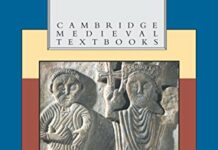
Ebook Info
- Published: 2005
- Number of pages: 400 pages
- Format: PDF
- File Size: 6.52 MB
- Authors: Florin Curta
Description
The first book in English to blend history and archaeology for a period of history currently receiving much scholarly attention, East Central and Eastern Europe in the Early Middle Ages examines key problems of the early medieval history of Eastern Europe, with particular reference to society, state, and the conversion to Christianity, and the diverse ways in which these aspects have been approached in the historiography of the region. The included essays examine the documentary and archaeological evidence of early medieval Europe in an attempt to assess its importance in understanding the construction of cultural identity and the process of political mobilization for the rise of the states. The book addresses an audience of historians, archaeologists, anthropologists, and linguists with an interest in the history of Eastern Europe.
User’s Reviews
Editorial Reviews: Review “This volume constitutes a persuasive argument in favor of treating East Central European and Balkan history together. Curta has thus more than adequately followed up his award-winning The Making of the Slavs: History and Archaeology of the Lower Danube Region, ca. 500-700 (2001).”―Charles J. Halperin, American Historical Review — Charles J. Halperin ― American Historical Review Published On: 2006-04-01″Because these articles reflect the latest views on the history of this region by leading professional historians, this concise volume will prove valuable to scholars and advanced students needing access to this complex material in English.”―Cosmin Popa-Gorjanu, History — Cosmin Popa-Gorjanu ― History Published On: 2006-10-11″Curta’s aim in editing the present collection is clearly to reinforce the need for western archaeologists and historians to refocus attitudes and approaches to the ways in which they use and interpret the Middle Ages in the east. The book achieves that aim and should be read by all those working on western Europe as it provides alternative perspectives on early medieval societies which must be appreciated and understood in order to situate developments in the west. This reviewer hopes that the next generation of major archaeological and historical syntheses will incorporate eastern Europe in a way that recent major works, such as McCormick’s Origins of the European Economy, and Wickham’s Framing the Early Middle Ages, have neglected to do.”―Andrew Reynolds, Institute of Archaeology, University College London, Early Medieval Europe — Andrew Reynolds, Institute of Archaeology, University College London ― Early Medieval Europe Published On: 2007-02-01″All the chapters contain extensive scholarly apparatus…This book therefore serves a dual purpose, as a sampling of recent research on the history of eastern and east central Europe in the early Middle Ages and as an invaluable scholarly resource.”―Jean W. Sedlar, Slavic Review — Jean W. Sedlar, University of Pittsburgh, Johnstown ― Slavic Review Published On: 2006-10-01Named a Choice Outstanding Academic Title ― American Library Association (ALA) Choice Outstanding Academic Title Published On: 2007-01-01 About the Author Florin Curta is Associate Professor of Medieval History and Archaeology, University of Florida. His previous book is The Making of the Slavs: History and Archaeology of the Lower Danube Region, ca. 500-700, which won the Herbert Baxter Adams Book Award of the American Historical Association.
Reviews from Amazon users which were colected at the time this book was published on the website:
⭐This collection of articles had an academic focus, with emphasis on archeological methodology. Texts from the early medieval period pertaining to eastern Europe are rare and thus much of the articles focus on archeological evidence to support various theories of the origins of the nationalities with an emphasis on Poland in this text. One article on Khazari coins was particularly interesting to me as the author attempted to use the evidence of coinage with images that could be related to the conversion of the state to Judaism, pinpointing the date to around 838 CE. Although there are very few coins and all only produced seemingly one time only, the author makes an interesting argument.There is a fairly good introduction by the editor explaining the background of eastern European historical research, the distortions of the Soviet dominated period, and the former emphasis on attempts to justify modern ethnic states based on ancient tribal patterns that is now giving way to a more open ended approach with emphasis on modern archeological techniques such as tree ring chronology to more accurately date such evidence as the growth of mound fortifications in Poland and their possible meanings.Fascinating in the detailed analysis, but not a book for beginners who want a general history of early medieval Europe, this is more for specialists, or researchers.
⭐This book provides a good overview in English of different aspects of the early Middle Ages in European countries formerly part of the Soviet Bloc. Florin Curta is very good at interpreting archaeological data, and placing it in a wider historical context.
Keywords
Free Download East Central and Eastern Europe in the Early Middle Ages in PDF format
East Central and Eastern Europe in the Early Middle Ages PDF Free Download
Download East Central and Eastern Europe in the Early Middle Ages 2005 PDF Free
East Central and Eastern Europe in the Early Middle Ages 2005 PDF Free Download
Download East Central and Eastern Europe in the Early Middle Ages PDF
Free Download Ebook East Central and Eastern Europe in the Early Middle Ages



